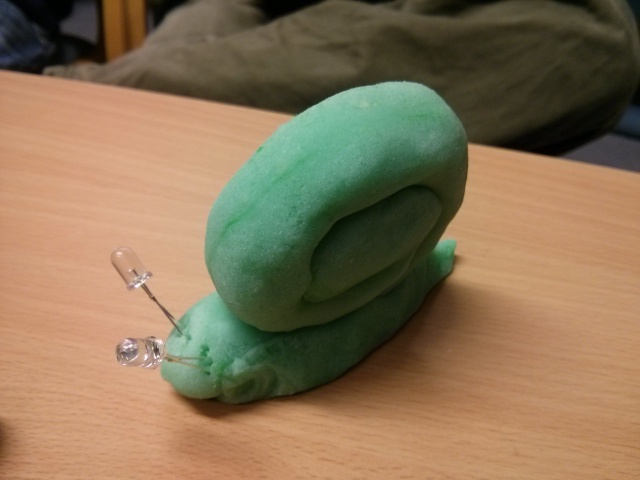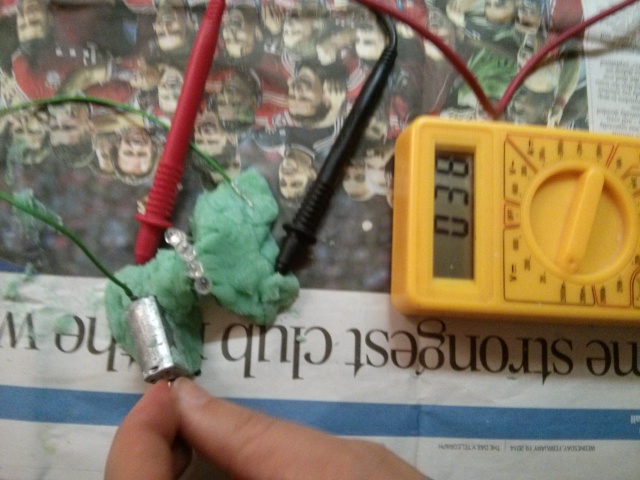Play dough Power Production
As a society we are always interested in what technology can do for us, however sometimes it’s fun to go back to basics and play low-tech, and what’s more low-tech than play dough! Two of our members, Berni and Simon, spent a couple of days prior to the meeting cooking up batches of conductive play dough using a recipe from the University of St Thomas in the USA.

Using these batches our members experimented with the resistivity of the play dough, with a centimetre cube having a resistance of over 40 KiloOhms, equivilant of about 1243 miles (2000km) of 1mm wire. As many of you may already know most DC motors can also be used as generators. Usually a motor converts electricity energy into rotational kinetic energy; however if you provide rotational energy it will convert this kinetic energy to electrical energy. One of our member, Toby, decided to investigate the efficiency of this idea when using play dough as the conductive links.

By hooking up a number of LED’s across the pins of the motor he was able to spin the shaft and generate electricity. Of course with the resistance of the play dough wires being in the hundreds of MegaOhms, no current limiting resistor was needed, regardless of the power being generated by the spin of the motor.
{% youtube wqbbvdxNTao %}